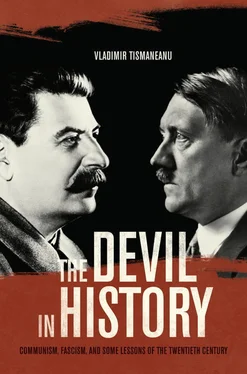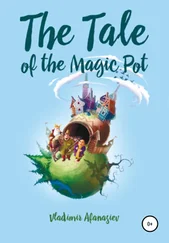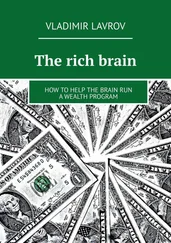21. Griffin, Modernism and Fascism , p. 181.
22. Ian Kershaw, Hitler (London: Penguin Books, 2009), p. xxxvii.
23. Ian Kershaw, The ‘Hitler Myth’: Image and Reality in the Third Reich (Oxford and New York: Oxford University Press, 1987), p. 173
24. Karl Dietrich Bracher, The German Dictatorship , p. 350.
25. Kershaw, The ‘Hitler Myth,’ p. 257.
26. Emilio Gentile, The Sacralization of Politics in Fascist Italy (Cambridge, Mass.: Harvard University Press, 1996), pp. 132-36.
27. Emilio Gentile, The Struggle for Modernity: Nationalism, Futurism, and Fascism (Westport, Conn., and London: Praeger Publishers, 2003), p. 138.
28. Bosworth, Mussolini’s Italy , p. 421.
29. Igal Halfin, From Darkness to Light: Class, Consciousness, and Salvation in Revolutionary Russia (Pittsburgh, Penn.: University of Pittsburgh Press, 2000), pp. 156-57.
30. Erik van Ree, The Political Thought of Joseph Stalin—a Study in Twentieth-Century Patriotism (London and New York: Routledge Curzon, 2002), pp. 160-62.
31. Gentile quotes the fascist catechism of 1939: “The DUCE, Benito Mussolini, is the creator of Fascism, the renewer of civil society, the Leader of the Italian people, the founder of the Empire.” In Gentile, The Struggle for Modernity , pp. 137-38.
32. Yoram Gorlizki and Hans Mommsen, “The Political (Dis)Orders of Stalinism and National Socialism,” in Beyond Totalitarianism , ed. Geyer and Fitzpatrick, p. 85.
33. Kenneth Jowitt, New World Disorder: The Leninist Extinction (Berkeley: University of California Press, 1992), p. 4.
34. Bosworth, Mussolini’s Italy , p. 506. In the first broadcast after his return to Italy (September 18, 1943), Mussolini announced that the new state would be “Fascist in a way that takes us back to our origins.”
35. Quoted in Michael Burleigh, “Political Religion and Social Evil,” Totalitarian Movements and Political Religions 3, no. 2 (Autumn 2002): 56.
36. Norman Naimark, “Stalin and the Question of Genocide,” in Political Violence: Belief, Behavior, and Legitimation , ed. Paul Hollander (New York: Palgrave Macmillan, 2008), p. 47; Norman Naimark, Stalin’s Genocides (Princeton, N.J.: Princeton University Press, 2010).
37. Ben Kiernan, The Pol Pot Regime: Race, Power, and Genocide in Cambodia under the Khmer Rouge, 1975-1979 (New Haven, Conn., and London: Yale University Press, 2002); Vladimir Tismaneanu, Stalinism for All Seasons: A Political History of Romanian Communism (Berkeley: University of California Press, 2003).
38. François Furet, The Passing of an Illusion , pp. 261 and 224.
39. Anson Rabinbach, “ Introduction: Legacies of Antifascism,” in “Legacies of Antifascism,” special issue, New German Critique 67 (Winter 1996): 14. Besides the articles from the special issue of the New German Critique that I quoted in this section, two others bring forth excellent insight about the anti-Fascism of Weimer Germany and of postwar Italy: Antonia Grunenberg, “Dichotomous Political Thought in Germany before 1933,” and Leonardo Paggi, “Antifascism and the Reshaping of Democratic Consensus in Post-1945 Italy,” in “Legacies of Antifascism,” special issue, New German Critique 67 (Winter 1996).
40. Dan Diner and Christian Gundermann, “On the Ideology of Antifascism,” in “Legacies of Antifascism,” special issue, New German Critique 67 (Winter 1996): 123-32.
41. Geoff Eley, “Legacies of Antifascism: Constructing Democracy in Postwar Europe,” in “Legacies of Antifascism,” special issue, New German Critique 67 (Winter 1996): 75 and 81.
42. For an illuminating study on this topic, see Ekaterina Nikova, “Bulgarian Stalinism Revisited,” in Stalinism Revisited: The Establishment of Communist Regimes in East-Central Europe , ed. Vladimir Tismaneanu (Budapest and New York: CEU Press, 2009).
43. Gale Stokes, ed., From Stalinism to Pluralism: A Documentary History of Eastern Europe since 1945 (New York and Oxford: Oxford University Press, 1996), pp. 38-42.
44. Kołakowski, Main Currents , p. 885. For the latest account of the “philosophy debate” and of the post-1945 ideological offensive against science in the USSR, see Ethan Pollock, Stalin and the Soviet Science Wars (Princeton, N.J., and Oxford: Princeton University Press, 2006). For Zhdanovism (its origins, nature, and impact), see Kees Boterbloem, The Life and Times of Andrei Zhdanov, 1896-1948 (Montreal: McGill-Queen’s University Press, 2004). Boterbloem shows how the cultural wars of 1946-48 were “dress rehearsed” as early as 1940 (pp. 210-13). Between 1945 and 1947, there was no attempt by Stalin to liberalize or reform the regime (despite the populace’s expectations and signals along these lines within the Politburo). On the contrary, during those years there was continuity with the prewar situation and a noticeable radicalization by means of the reignition of the politics of purge. See Michael Parrish, The Lesser Terror: Soviet State Security, 1939-1953 (New York: Praeger, 1996); and Yoram Gorlizki and Oleg Khlevniuk, Cold Peace: Stalin and the Soviet Ruling Circle, 1945-1953 (Oxford: Oxford University Press, 2004).
45. Anne Applebaum, Gulag: A History (Anchor Books, 2003), pp. 436-37; and Richard Overy’s review of this book, “A World Built on Slavery,” Daily Telegraph , May 20, 2003.
46. Snyder, Bloodlands , p. 328.
47. For a telling account of the paradoxes and pitfalls of the European anti-Fascist Left in the aftermath of the Second World War, see Simone de Beauvoir’s novel The Mandarins (New York: W. W. Norton, 1991).
48. Quoted in Alexander Bloom, Prodigal Sons: The New York Intellectuals and Their World (New York: Oxford University Press, 1986), p. 232.
49. Michael Burleigh called this practice an act of indulging in “vicarious utopianism.”
50. Tony Judt, Past Imperfect: French Intellectuals, 1944-1956 (Berkeley: California University Press, 1992), p. 75.
51. Anson Rabinbach, “Introduction,” p. 17. I do agree with Henri Rousso’s rebuke of those who consider that anti-Fascism has run its historical course and argue that it is not relevant for the analysis of recent history. The absence of an identifiable adversary does not preclude the danger of totalitarian repeat or seduction. Having anti-Fascism and anti-Communism as inherent facets of European culture is crucial in learning from and avoiding the last century’s ideological hubris. Rousso argues that “[to the position] that antifascism continues to prosper despite the fact that its target disappeared more than a half century ago, we could reply that anti-communism finds itself in an identical situation today, for while there is no real adversary, there is nevertheless a temptation to create one out of whole cloth.” Henry Rousso, “Introduction: The Legitimacy of an Empirical Comparison,” in Stalinism and Nazism , p. 5.
52. See Marcel Gauchet, A l’épreuve des totalitarismes (Paris: Gallimard, 2010).
53. Martin Malia, “Foreword: The Uses of Atrocity,” in Stéphane Courtois, Nicolas Werth, Jean-Louis Panné, Andrzej Paczkowski, Karel Bartošek, and Jean-Louis Margolin, The Black Book of Communism: Crimes, Terror, Repression , ed. Mark Kramer, trans. Jonathan Murphy (Cambridge, Mass.: Harvard University Press, 1999), p. xvii. Courtois and several collaborators put together a follow-up to the Livre Noir, Du passé nous faisons table rase! Histoire et mémoire du communisme en Europe (Paris: Laffont, 2002).
Читать дальше












